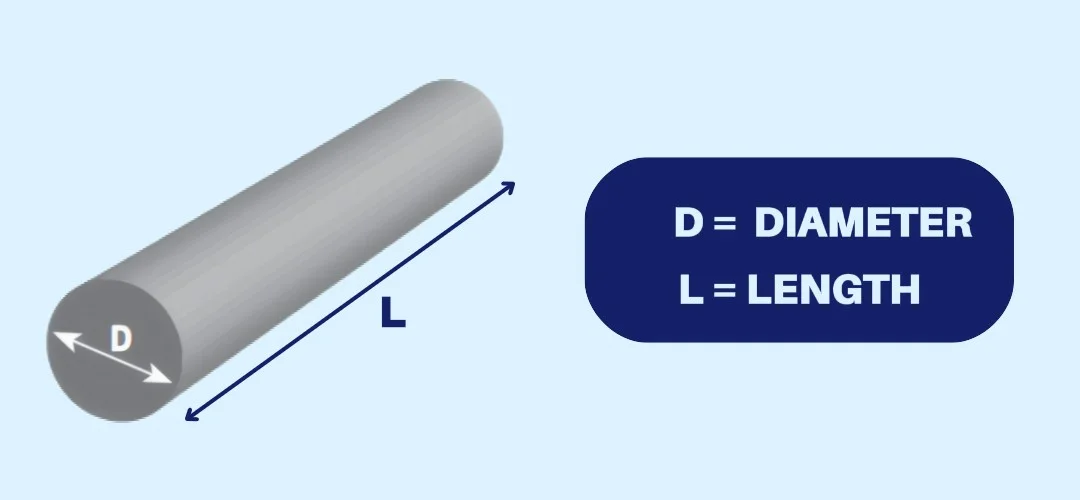1. Introduction
1.1 Overview of the Reynolds Number Concept
The Reynolds number (Re) is a dimensionless quantity used in fluid mechanics to predict the flow regime of a fluid. It is essentially a ratio of inertial forces to viscous forces and is pivotal in understanding whether a fluid flow will be laminar or turbulent. A flow is classified as laminar if it is smooth and orderly, and turbulent if it is chaotic and irregular. The Reynolds number plays a fundamental role in various scientific and engineering disciplines, ranging from aerodynamics to environmental science.
1.2 Importance of Reynolds Numberss in Fluid Mechanics
Reynolds number holds immense importance in fluid dynamics, as it allows engineers and scientists to predict flow patterns without the need for intricate simulations or experiments. By quantifying the relative effects of viscosity and inertia, it helps to determine whether flow characteristics will remain steady or deviate into disorder. This simple, yet powerful tool is used across numerous applications, such as pipeline design, aircraft development, and environmental monitoring.
1.3 History and Development
The concept of Reynolds number was introduced by Osborne Reynolds in 1883. Through a series of experiments, Reynolds discovered that the nature of fluid flow could be predicted based on the value of this dimensionless quantity. Over time, the Reynolds number has become a fundamental principle in fluid mechanics, contributing to advancements in fields such as thermodynamics, aerodynamics, and even biological systems.
2. Understanding Reynolds Number
The Reynolds number is defined mathematically as:

This formula encapsulates the interplay of factors that determine whether flow will remain stable or become turbulent.
Each component of the Reynolds number equation plays a significant role in determining the flow characteristics. Fluid density (ρ) represents the mass per unit volume, while viscosity (μ) governs internal friction. Flow velocity (u) dictates the momentum transfer within the fluid, and the characteristic length (L) is usually related to the dimensions of the system or the object interacting with the fluid.s
Laminar Flow vs. Turbulent Flow
Laminar flow occurs when a fluid flows in smooth layers, with minimal mixing between adjacent layers. It is typically observed at low Reynolds numbers (Re < 2000). In contrast, turbulent flow is characterized by chaotic eddies and vortices, and occurs at higher Reynolds numbers (Re > 4000). Between these two regimes, a transitional flow occurs, where fluctuations may cause the flow to switch between laminar and turbulent states.

The Role of Fluid Density, Velocity, and Viscosity
The fluid density, velocity, and viscosity work together to determine the Reynolds number. Higher fluid velocities and densities, along with lower viscosities, increase the likelihood of turbulent flow. Conversely, lower velocities and viscosities favor laminar flow. The interplay between these factors is essential for engineers to anticipate flow behavior in various systems.
3. The Physics Behind Reynolds Number
3.1 How Reynolds Number Predicts Flow Patterns
Reynolds number serves as a predictive tool by identifying the flow regime based on fluid properties and flow conditions. At low Reynolds numbers, the effects of viscosity dominate, and the flow remains orderly. At high Reynolds numbers, inertial forces outweigh viscous forces, leading to unpredictable, turbulent flow. This distinction aids in designing systems and predicting flow behavior in numerous engineering applications.
3.2 Transition from Laminar to Turbulent Flow
As Reynolds number increases, a point is reached where laminar flow transitions into turbulence. This critical threshold (typically around Re = 2000) marks a delicate shift in fluid dynamics, influenced by factors like surface roughness and flow disturbances. This transition is not always instantaneous; instead, the flow may fluctuate between the two states in the transitional range.
3.3 The Role of Boundary Layers in Fluid Flow
Boundary layers are the thin regions of fluid near a solid surface where the velocity changes from zero to the free-stream velocity. The behavior of these layers is heavily influenced by Reynolds number. In laminar flow, boundary layers remain thin and well-defined, while in turbulent flow, they become thicker and chaotic, further influencing the characteristics of the overall flow.

3.4 The Critical Reynolds Number and Its Significance
The critical Reynolds number serves as a benchmark, typically around 2000, beyond which flow becomes turbulent. It is of great significance in predicting when and where flow will destabilize. For systems where maintaining laminar flow is essential, such as in pipe design or biological systems, understanding this critical point is crucial.
4. Calculating Reynolds Number
4.1 Step-by-Step Guide to Calculating Reynolds Number
Calculating Reynolds number requires knowledge of the fluid’s density, velocity, viscosity, and the characteristic length. Begin by identifying these properties for the fluid in question, then apply them in the Reynolds number equation. This calculation can guide engineers and scientists in selecting materials, designing systems, and optimizing flow conditions.
4.2 Common Units Used in Reynolds Number Calculations
Reynolds number is dimensionless, meaning that it does not require specific units. However, when calculating it, common units include:
- Density (ρ) in kg/m³
- Velocity (u) in m/s
- Viscosity (μ) in Pa·s (Pascal-seconds) or N·s/m²
- Characteristic length (LLL) in meters (m)
4.3 Examples of Reynolds Number Calculation in Different Scenarios
Consider a fluid flowing through a pipe: by knowing the flow velocity, fluid density, viscosity, and pipe diameter, one can calculate the Reynolds number. In the case of airflow over an airplane wing, similar principles apply, where the characteristic length might be the wing’s chord length.
5. Factors Affecting Reynolds Number
5.1 Fluid Properties: Density, Viscosity, and Their Impact
Fluid density and viscosity are the primary factors that influence Reynolds number. Denser fluids (such as water) typically have lower Reynolds numbers compared to less dense fluids (such as air), for the same flow velocity. Higher viscosity fluids, such as oil, also result in lower Reynolds numbers. These properties govern whether the flow will remain steady or become turbulent.
5.2 Flow Velocity and Its Influence on Flow Regimes
Flow velocity is perhaps the most direct factor affecting Reynolds number. Higher velocities tend to increase the Reynolds number, pushing the flow from laminar to turbulent. Velocity fluctuations, however, can lead to instabilities even at relatively low Reynolds numbers, further complicating the relationship between the two variables.
5.3 Characteristic Length and Its Role in Calculations
Characteristic length is the size scale used in Reynolds number calculations. In pipe flow, it is typically the diameter, while in aerodynamics, it is the length of the object or surface in question. This length scale influences the magnitude of the Reynolds number and the likelihood of turbulent flow.
6. Reynolds Number and Flow Regimes
6.1 Laminar Flow: Characteristics and Examples
Laminar flow is smooth and orderly, with fluid particles moving in parallel layers. It is commonly observed in conditions with low velocity and high viscosity, such as in small pipes or highly viscous fluids. A well-known example is the flow of oil in narrow pipes or the movement of blood in small blood vessels.
6.2 Turbulent Flow: Characteristics and Examples
Turbulent flow, in contrast, is chaotic, characterized by vortices and eddies. It occurs at higher Reynolds numbers and is commonly seen in large-scale systems such as the flow of water through rivers or air over large aircraft. The random fluctuations in velocity make turbulent flow more difficult to model and control.
6.3 Transitional Flow: Behavior and Challenges
Transitional flow occurs in the intermediate range of Reynolds numbers (typically between 2000 and 4000). This state is marked by instability, where the flow fluctuates between laminar and turbulent regimes. It presents challenges in predicting and controlling fluid dynamics, as slight disturbances can alter the flow pattern significantly.

6.4 The Reynolds Number and Critical Flow Points
The critical Reynolds number marks the threshold between laminar and turbulent flow. Knowing this value is crucial in design, particularly when it is necessary to maintain laminar flow to minimize energy losses or optimize performance.
7. Applications of Reynolds Number in Engineering
7.1 Fluid Flow in Pipelines and Ducts
Reynolds number plays a critical role in the design of pipelines and ducts. By calculating the Reynolds number, engineers can predict whether the flow will be laminar or turbulent, guiding the choice of pipe diameter, material, and surface treatment to optimize fluid transport.
7.2 Reynolds Number in Aerodynamics: Aircraft Design and Wind Tunnels
In aerodynamics, Reynolds number helps determine airflow characteristics around objects such as aircraft wings. Wind tunnels are often used to simulate and measure flow conditions at various Reynolds numbers, aiding in the design of efficient and stable vehicles.
7.3 Reynolds Number in Hydrodynamics: Boat and Ship Design
Similar to aerodynamics, hydrodynamics relies on Reynolds number to predict the behavior of water flowing around boats and ships. Accurate predictions of flow behavior help in designing hull shapes that reduce drag and improve fuel efficiency.
7.4 Application in Heat Transfer and Thermal Engineering
In thermal systems, Reynolds number impacts heat transfer rates. Turbulent flow enhances convective heat transfer, making it beneficial in heat exchangers and other thermal devices. Understanding and manipulating Reynolds number helps in optimizing heat exchange efficiency.
8. Reynolds Number in Natural Phenomena
Reynolds number plays a crucial role in the study of natural flows, such as rivers and streams. It helps predict sediment transport, water mixing, and ecological behavior, contributing to environmental management and conservation efforts.
Atmospheric scientists use Reynolds number to model weather patterns and predict turbulent air movements. It helps in understanding phenomena such as wind shear, vortex formation, and storm dynamics.
In biological systems, Reynolds number is essential in understanding blood flow in arteries and respiratory air movement in the lungs. These insights are used in medical diagnostics and the design of artificial organs, such as heart pumps and ventilators.
9. Reynolds Number in Industrial Applications
9.1 Chemical Engineering: Reactors and Fluidized Beds
In chemical engineering, Reynolds number is used to characterize flow within reactors and fluidized beds. This information guides the design of equipment for optimal reaction rates and efficient mixing.
9.2 Petroleum Industry: Pipeline Flow and Transport
The petroleum industry heavily relies on Reynolds number to model and predict the flow of crude oil and natural gas through pipelines. This ensures that systems are designed to minimize energy loss and prevent blockages or turbulence.
9.3 HVAC Systems and Airflow Design
Heating, ventilation, and air conditioning (HVAC) systems use Reynolds number to optimize airflow patterns within ducts and across heat exchangers. Accurate Reynolds number calculations can help reduce energy consumption and improve indoor air quality.
9.4 Reynolds Number in the Design of Turbo-machinery
Reynolds number is vital in the design and operation of turbo-machinery, such as turbines and compressors. Understanding flow regimes allows engineers to improve performance, reduce wear, and increase the longevity of such systems.
10. Reynolds Number and Microfluidics
In microfluidics, Reynolds number is often quite low due to the small scale of devices and fluids involved. This affects the flow behavior, where viscous forces dominate, making it essential to design systems that manage laminar flow for precision.
Reynolds number is critical in the design of lab-on-a-chip devices, where the manipulation of fluids on a micro scale is required for diagnostics, drug development, and medical testing.
At small scales, surface forces such as surface tension and adhesion become more significant than inertial forces. In these devices, controlling Reynolds number helps in ensuring smooth fluid control and precise reactions.
11. Reynolds Number and Its Impact on Efficiency
Turbulent flow is associated with increased energy losses due to friction and mixing. By understanding and optimizing Reynolds number, engineers can design systems that minimize turbulence, leading to lower operational costs.
In many industrial processes, managing Reynolds number allows for the optimization of system efficiency. For instance, in heat exchangers, controlling flow regimes ensures maximum heat transfer with minimal energy input.
Reducing turbulence is a key goal in many systems, as turbulent flow increases drag, energy loss, and instability. By adjusting factors such as pipe diameter or fluid velocity, engineers can achieve more stable and efficient flow.
12. Reynolds Number and Scale Effects
12.1 How Scale Affects Flow Behavior and Reynolds Number
At different scales, the behavior of fluid flow changes significantly. For example, in large-scale systems, Reynolds numbers are often much higher, leading to turbulent flow. Understanding how scale affects Reynolds number is crucial when transitioning from laboratory models to full-scale systems.
12.2 Reynolds Number in Small-Scale vs. Large-Scale Systems
Small-scale systems, such as those in microfluidics or biological systems, generally operate at lower Reynolds numbers, where viscous forces dominate. In contrast, large-scale systems, like industrial pipelines or aircraft, often encounter higher Reynolds numbers, where inertial forces govern the flow.
12.3 Scaling Laws and Their Practical Implications
Scaling laws allow for the prediction of flow behavior across different system sizes, guiding engineers in designing efficient systems and translating laboratory results to real-world applications.
13. Limitations of Reynolds Number
Reynolds number calculations assume ideal conditions such as steady flow and uniform fluid properties. These assumptions may not hold in all scenarios, leading to discrepancies in real-world applications.
Reynolds number does not account for all types of complex flow behavior, such as non-Newtonian fluids, where viscosity changes with the shear rate. In these cases, other models may be needed.
Non-Newtonian fluids, which exhibit variable viscosity, pose a challenge to traditional Reynolds number predictions. Additional factors must be considered when modeling the flow of these fluids in various systems.
14. Innovative Uses and Developments
14.1 Advances in Computational Fluid Dynamics (CFD) and Reynolds Number
Recent advancements in computational fluid dynamics (CFD) have enabled more precise simulations of fluid flow. These technologies allow for the prediction of flow patterns at various Reynolds numbers, contributing to innovations in aerospace, automotive, and environmental engineering.
Researchers are developing novel methods to predict and control flow transitions. By refining our understanding of Reynolds number and flow dynamics, it may be possible to more effectively control the transition between laminar and turbulent flow in diverse applications.
Reynolds number plays a pivotal role in the development of sustainable energy systems. By optimizing fluid flow in wind turbines, hydroelectric systems, and energy-efficient HVAC technologies, this principle contributes to the advancement of greener technologies.
15. Conclusion
Reynolds number is an indispensable tool in fluid dynamics, offering a means of predicting flow behavior across diverse systems. From industrial applications to natural phenomena, it helps guide decision-making, optimize performance, and improve energy efficiency.
Ongoing research is focused on refining the methods used to calculate and apply Reynolds number, especially in complex or non-Newtonian fluid systems. As computational models improve, it is likely that Reynolds number will continue to evolve and find new applications.
Despite its age, Reynolds number remains central to modern fluid mechanics, offering critical insights into flow behavior. Its ability to inform both theoretical understanding and practical design ensures its continued relevance in a wide range of disciplines.
16. FAQS
- What is Reynolds number and why is it important in fluid mechanics?
Reynolds number is a dimensionless quantity used to predict the flow behavior of a fluid. It represents the ratio of inertial forces to viscous forces within a fluid and helps determine whether the flow will be laminar (smooth) or turbulent (chaotic). It is crucial in fluid mechanics as it aids engineers in designing systems that either maintain smooth flow or handle turbulent conditions effectively.
- How is Reynolds number calculated in fluid dynamics?
The Reynolds number is calculated using the formula:
Re = ρ * v * D / μ
Where ρ is the fluid density, v is the flow velocity, L is the characteristic length (e.g., diameter of a pipe), and μ is the fluid’s dynamic viscosity. This formula helps predict whether flow will be laminar or turbulent based on these factors.
- What does the Reynolds number indicate about fluid flow?
The Reynolds number indicates whether fluid flow is laminar or turbulent. At low Reynolds numbers (typically below 2000), the flow is laminar, with fluid particles moving in parallel layers. At high Reynolds numbers (above 4000), the flow becomes turbulent, characterized by chaotic eddies and irregular motion.
- What is the difference between laminar flow and turbulent flow?
Laminar flow is smooth, orderly, and occurs at low velocities where viscous forces dominate. In contrast, turbulent flow is chaotic, with random fluctuations and eddies, and occurs at higher velocities where inertial forces overwhelm viscosity. The transition between these two flow types is influenced by the Reynolds number.
- How does Reynolds number affect fluid flow in pipes and ducts?
In pipes and ducts, Reynolds number helps determine whether the flow will be laminar or turbulent. At low Reynolds numbers, flow remains smooth and efficient, minimizing energy loss. At higher Reynolds numbers, turbulence increases, leading to higher frictional losses and less efficient flow. Engineers use this to optimize pipe sizes and material choices.
- What role does Reynolds number play in aircraft and ship design?
Reynolds number is essential in aerodynamics and hydrodynamics for predicting airflow over aircraft surfaces or water flow around ships. A high Reynolds number indicates turbulent flow, which can impact drag and stability, while lower values suggest laminar flow, which is more efficient for minimizing resistance. Understanding Reynolds number helps optimize the design for fuel efficiency and performance.
- How is Reynolds number used in heat transfer and thermal engineering?
In thermal engineering, Reynolds number influences the rate of heat transfer. Turbulent flow, which occurs at higher Reynolds numbers, enhances mixing and heat exchange between fluids and surfaces, improving thermal efficiency. Engineers use Reynolds number to design systems such as heat exchangers to optimize heat transfer performance.
- Can Reynolds number be applied to biological systems like blood flow?
Yes, Reynolds number is used to analyze blood flow and other biological fluid systems. For example, blood flow in arteries can exhibit laminar behavior at low Reynolds numbers and turbulent behavior at high Reynolds numbers. Understanding the flow regime helps in diagnosing vascular conditions and designing medical devices such as artificial hearts and stents.
- How does Reynolds number influence the efficiency of fluid systems?
Reynolds number directly affects the efficiency of fluid systems. Laminar flow tends to have less friction and lower energy losses, while turbulent flow increases drag and energy consumption. By controlling Reynolds number, engineers can design systems that either minimize energy losses or ensure the right type of flow for specific processes, like mixing or filtration.
- What are the limitations of Reynolds number in predicting flow behavior?
While Reynolds number is a useful tool, it has limitations. It assumes ideal conditions like steady flow and uniform fluid properties, which may not always apply. Additionally, Reynolds number cannot predict complex flow behaviors in non-Newtonian fluids (whose viscosity changes with shear rate) or account for phenomena like fluid-structure interactions or multi-phase flows.







One Response
I’ve been browsing online more than 2 hours today, yet I never found any interesting
article like yours. It is pretty worth enough for me. In my opinion, if all web owners and bloggers made good content as you did,
the internet will be much more useful than ever before.